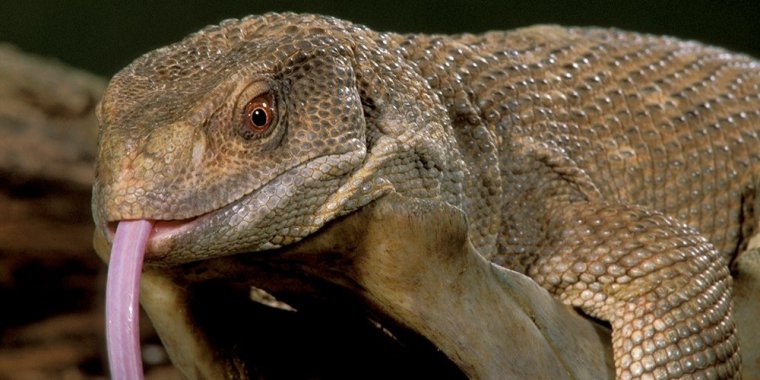| News / Science News |
Following the lizard lung labyrinth
It's unclear how the first vertebrates thrived after crawling out of the sea 400 million years ago, but the lungs hold an important clue.

Monitor lizards' lungs have a net-unidirectional airflow pattern in which air moves to-and-fro. Photo: Cheryl Ertelt
Birds, reptiles, amphibians and mammals have evolved diverse lung structures; air flows through them in complicated ways.
Birds and mammals mark the extreme ends of the airflow spectrum. Mammals inhale oxygen-rich air that funnels into smaller branches, ending in tiny sacs where oxygen enters and carbon dioxide leaves the bloodstream. When mammals exhale, the depleted air follows the same route out of the body, exhibiting a so-called tidal flow pattern.
In contrast, bird breath travels in this tidal flow pattern through part of the respiratory system, but in a one-way loop throughout most of the lung. Thanks to a unique design with aerodynamic valves, air always moves toward a bird's head through many tiny tubes -- during both inhalation and exhalation.
Scientists thought this pattern was hyper-efficient and evolved to support flight. But University of Utah biologist Colleen Farmer and colleagues discovered that alligators and iguanas also have a unidirectional air flow pattern.
The biologists discovered that Savannah monitor lizards have lung structures that are a hybrid system of bird and mammal lungs. The researchers took CT scans of the entire lung labyrinth and used two supercomputers -- including one of the fastest systems in the world, Blue Waters -- to simulate airflow patterns at the highest resolution. (National Science Foundation)
YOU MAY ALSO LIKE





